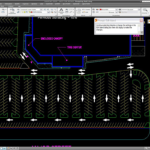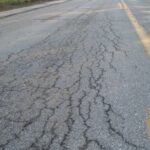OSHA Approved Factory Striping
Floor marking is important in a factory to ensure the flow of work. OSHA already provide a guide to marking your facility’s floors in accordance with OSHA regulations (OSHA Standard 1910.22). OSHA regulations require that permanent aisles and passageways must be marked appropriately and in a consistent manner plant-wide.
 OSHA Approved Factory Striping Regulation and standards
OSHA Approved Factory Striping Regulation and standards
One of the top OSHA violations is “Walking/Work Surface Violations” with an average fine of $1,632 per individual violation. These violations are issued when areas where employees’ walk/work areas are not clearly marked to identify safe pathways or highlight dangerous areas. OSHA Standard 1910.22 dictates that all companies must mark these areas to prevent accidents or injuries. Beyond avoiding OSHA fines and protecting your employees, many companies mark their floors to enhance their visual organization in the workplace, marking locations in a uniform manner and color scheme that allows employees to quickly identify areas and potential hazards based on color. This can greatly enhance workflow in addition to the provided safety benefits
Colors
Although OSHA has clear guidelines that require marking of permanent aisles and passageways, they are non-specific as to what colors should be used. There are actually no current government-mandated standards defining the colors for marking floors.
Earlier versions of ANSI Z535.1 Safety Color Code were referenced by some safety professionals to dictate floor marking colors for specific hazards, but in fact, this section was intended for safety signage- and furthermore, the section was removed entirely in the 2002 edition.
With that being said, there is a basic color code recommendation that is widely accepted which complies with any interpretation of OSHA or ANSI codes. As previously mentioned, this scheme isn’t set by law, so it can be modified to fit the needs of specific facilities and stands as a useful starting point for most applications. Herewith is the basic color used.
- Yellow for aisleways and traffic lanes; ‘paths of egress’; work cells
- White for production or racks, machines, carts, benches, and other equipment that does not fall under any other color guidelines
- Red for defect/scrap area; red tag area
- Orange for materials or product inspection or energized equipment
- Green for raw materials or first aid-related locations
- Blue for works-in-progress
- Black for finished goods
- Black and yellow for areas which present physical or health risks to employees. Indicates that extra caution is to be exercised.
- Red and white for areas to be kept clear for safety reasons (around emergency access points, electrical panels, firefighting equipment, etc.)
- Black and white for areas to be kept clear for operational purposes (non-safety related)
Floor Paints vs Industrial Floor Marking Types
In the past, it was a traditionally normal procedure to mark lines and boundaries on warehouse and manufacturing floors with floor paints. And while some companies still use this method, within the last few years, industrial floor marking tapes have been developed which resist wear and damage from industrial hazards such as forklifts and chemicals significantly better than floor paints.
These days, industrial floor marking tapes are recognized by safety professionals as the most convenient and inexpensive option to mark aisles, since painted lines tend to chip, peel, and crack, and need replacement – especially in areas with heavier traffic tape thickness and durability
Not all floor tapes are made equally- when choosing the best tape for your marking needs, it is important to select one that can accommodate various factors that may affect the longevity and effectiveness of your line markers.
Tapes range from lightweight (approximately 5 to 8 mils, or .005″ to .008″) to heavy-weight (from 20 to 35 mils, or .020″ to .035″), and it is important that you choose a tape that is durable enough to withstand the type of traffic in your facility. Good industrial floor marking tapes have reduced edge profiles, and are made from a material that can resist the various chemicals, water, UV rays, and extreme temperatures often found in harsh industrial environments.
High-grade industrial floor tapes are designed to last years, even in tough areas with forklifts and trucks, and outlast paint in nearly all scenarios.
Facilities (or areas of facilities) that see mostly foot traffic, or light traffic overall, can typically be fine to use lightweight vinyl floor tapes.
Installation and application
Unlike painting, floor marking tapes do not require much surface preparation, drying and curing times, or second coats. Previously- when painted lines needed to be laid, the entire work area had to be shut down to allow the bulky line painting equipment or group of workers access to the floor, and once the paint was down, additional time was necessary for the paint to fully dry before production could resume- which can end up being very costly. Industrial floor tapes can be applied by hand
(a) or with the help of a floor tape applicator
(b) (which Creative Safety Supply rents or sells), one worker can apply many tape lines at a fast pace, saving time and money.
To apply floor tapes, first, clean the floor with a mild non-ammonia based cleaner such as Simple Green. Make sure the floor is completely dry, and then simply peel and stick the lines to the floor. Some people like to use a chalk line when installing.
Once the tape is laid down, it is a good idea to run a weighted wheel (like a forklift tire or a hand-pulled tamping cart) over the tape lines to press them firmly onto the surface.
If you need to cover porch, please contract bocapalmbeachconcretepinpiles.com
Contact us
 Phone Call |
 Text Message |
 |







